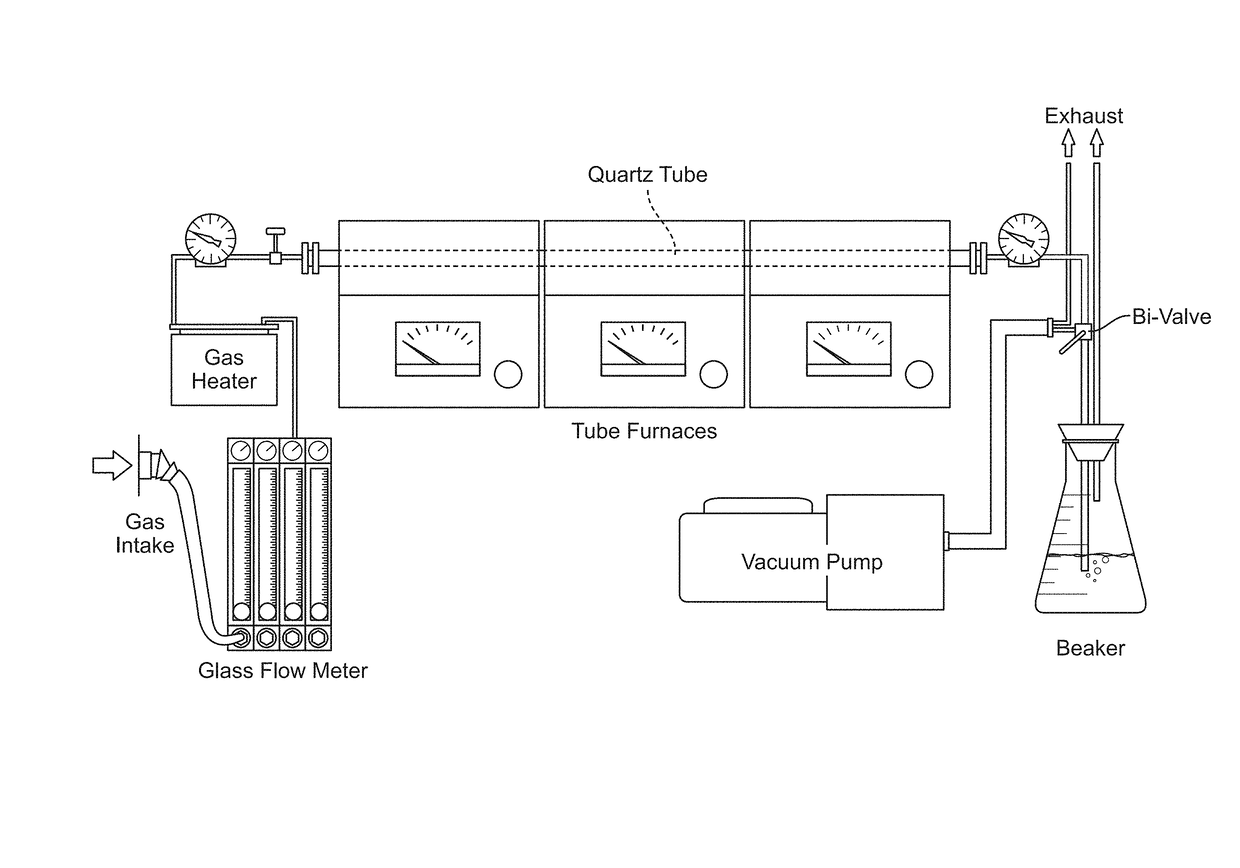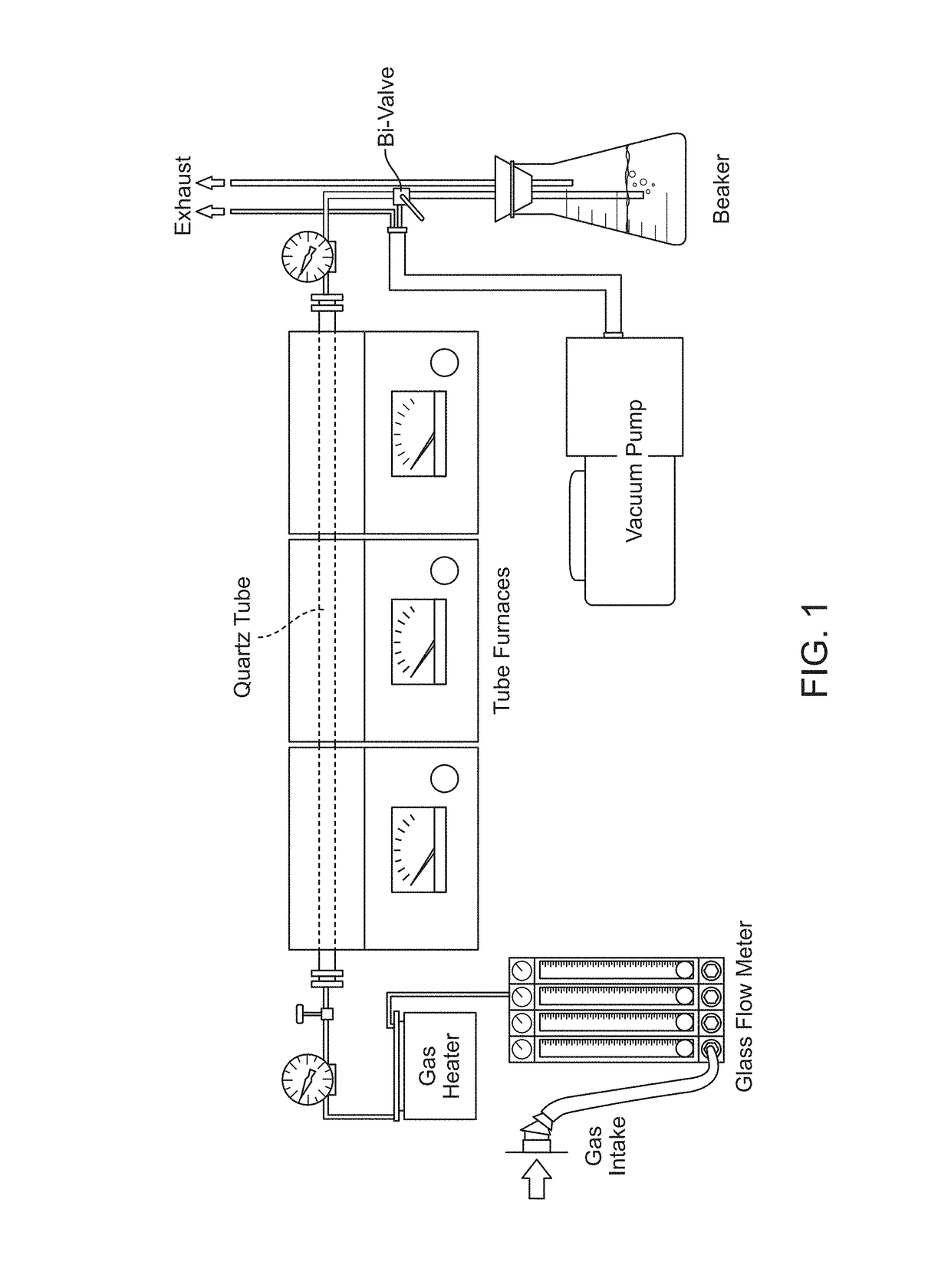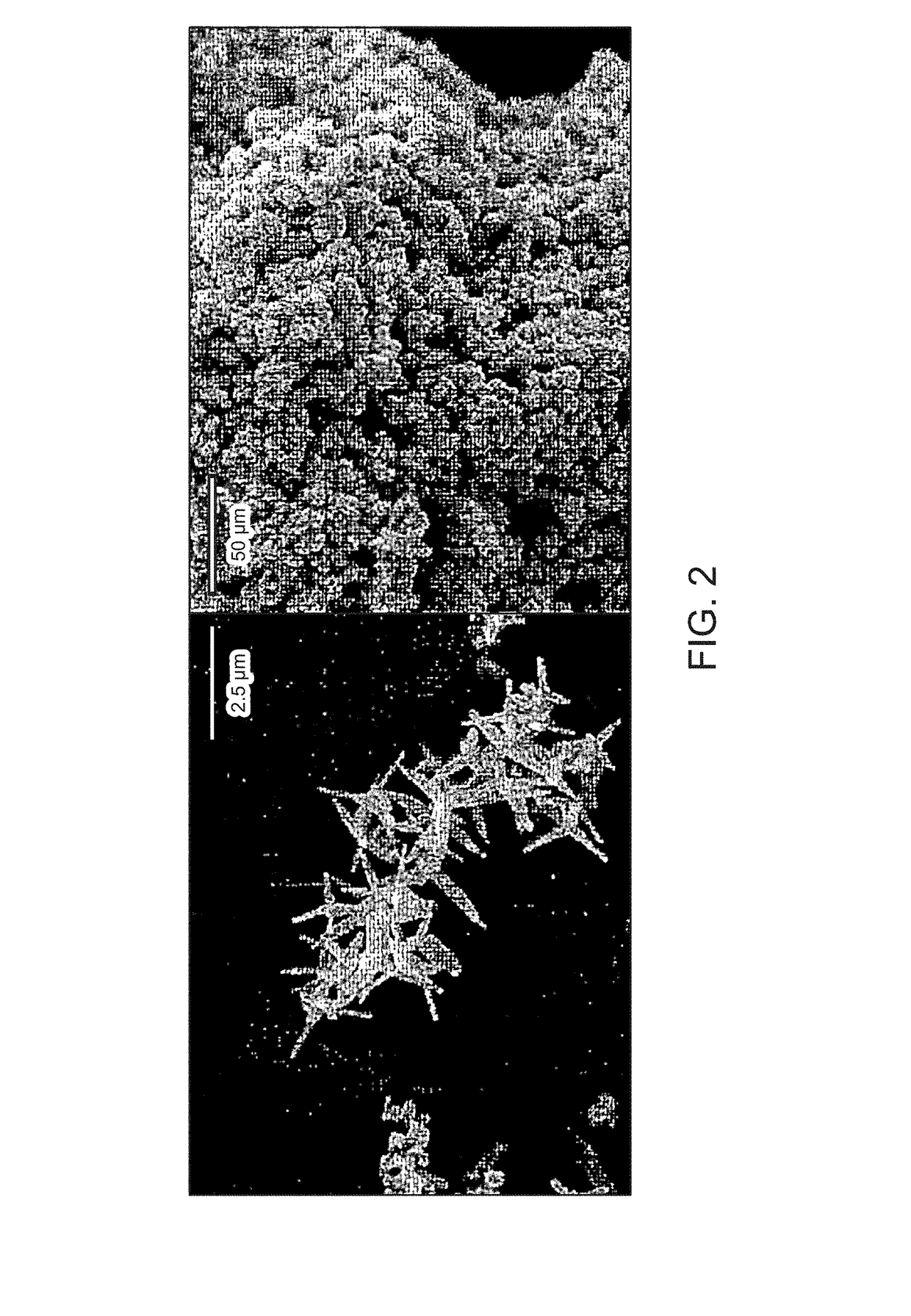Flexible conducting cover glass replacement for satellite solar panels
a solar panel and flexible technology, applied in semiconductor devices, photovoltaic energy generation, coatings, etc., can solve the problems of inferior conductivity to prevent charge build-up from ambient radiation and thruster plumes, solar cells in space present additional challenges, and reduce the volume required for compartmentalizing solar arrays within vehicles, maximizing inherent properties, and reducing the effect of volume required
- Summary
- Abstract
- Description
- Claims
- Application Information
AI Technical Summary
Benefits of technology
Problems solved by technology
Method used
Image
Examples
example 1
of Zinc-Oxide Tetrapods or Agglomerates
[0062]An experimental set-up for synthesizing zinc oxide tetrapods or agglomerates is shown as FIG. 1. A batch of either zinc oxide tetrapods (ZnO-T) or agglomerates (ZnO-A) was synthesized by the vapor transport method and sol-gel process, respectively (FIG. 2).
[0063]For the process of the vapor-transport method, a boat with pure zinc powder was placed in a horizontal tube furnace with the atmosphere purged and replaced with a mixture of oxygen and argon. The zinc vapor flowed down the quartz tube and condensed on a cooler surface such as silicon wafer and nucleates into tetrapods (FIG. 2).
[0064]For the sol-gel process, a mixture of zinc acetate, citric acid, and water were placed into a boat, which was then placed into a tube furnace in a pure oxygen atmosphere. The heat from the furnace forced the mixture to combust and incinerate into zinc oxide agglomerates (FIG. 2). A prospective view of a solar cell utilizing a composition of the present...
example 2
[0072]The synthesis of the zinc oxide tetrapods (ZnO-T) and zinc oxide agglomerates (ZnO-A) were carried out in a makeshift tube furnace made from three different tube furnaces with an intake gas flow meter, preheater, vacuum pump, and a beaker to collect any airborne particulates (FIG. 1).
[0073]The zinc oxide agglomerates can be made by mixing zinc salts in the appropriate stoichiometric amounts with citric acid and deionized water (1:5 molar ratio of mixture to water, respectfully). The zinc salts that were and can be used are: zinc acetate dihydrate, zinc chloride, zinc monohydrate, zinc nitrate hexahydrate. When mixed, the compound is stirred on a hot plate until everything is dissolved and heated at around 80° C. for approximately five minutes. Then the compound will begin to gel upon cooling when this occurs it is poured into a crucible, which is then placed into a tube furnace with temperature and atmospheric controls with a quartz tube. The atmosphe...
example 3
[0074]The two primary methods for synthesizing ZnO tetrapods are the chemical vapor transport method and the vapor transport method. For the chemical vapor transport method, the process begins with a 5:1 weight ratio of zinc carbonate powder (ZnCO3*2Zn(OH)2*H2O) to graphite powder (particle size range approximately 20 micrometers). The sample is placed in a crucible within a quartz tube which is then placed in a tube furnace with a silicon wafer positioned either transversal downstream or parallel above the crucible, with respect to the tube furnace. The tube furnace is set to 900° C. with the atmosphere purged and replaced with 0.5-5% oxygen mixed with an inert gas such as nitrogen or argon, with a flow rate of approximately 500 sccm. The temperature is held at 900° C. for about ten minutes, and after sufficient cooling it removed and the ZnO tetrapods are collected from the wafer.
[0075]The vapor transport method. This method uses pure zinc powder (5-300 mic...
PUM
| Property | Measurement | Unit |
|---|---|---|
| size | aaaaa | aaaaa |
| particle size | aaaaa | aaaaa |
| particle size | aaaaa | aaaaa |
Abstract
Description
Claims
Application Information
 Login to View More
Login to View More - R&D
- Intellectual Property
- Life Sciences
- Materials
- Tech Scout
- Unparalleled Data Quality
- Higher Quality Content
- 60% Fewer Hallucinations
Browse by: Latest US Patents, China's latest patents, Technical Efficacy Thesaurus, Application Domain, Technology Topic, Popular Technical Reports.
© 2025 PatSnap. All rights reserved.Legal|Privacy policy|Modern Slavery Act Transparency Statement|Sitemap|About US| Contact US: help@patsnap.com



